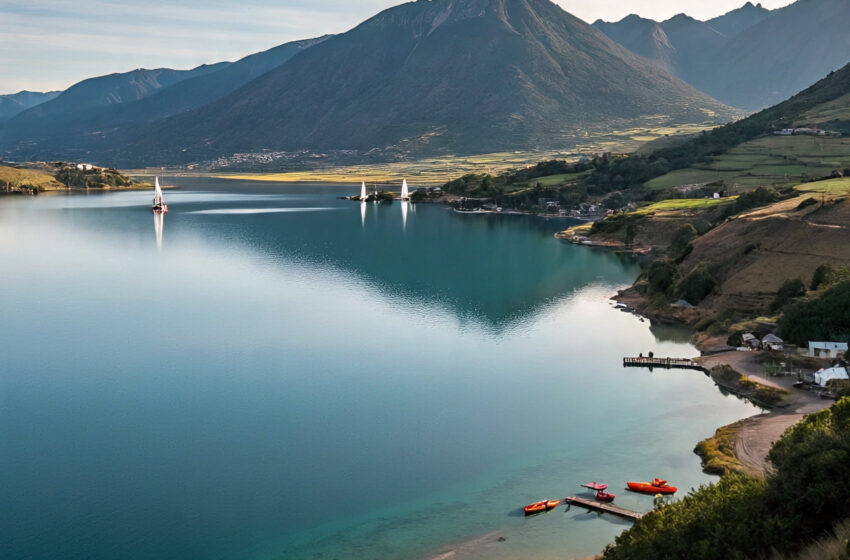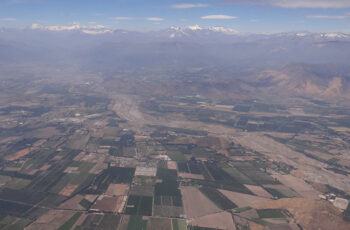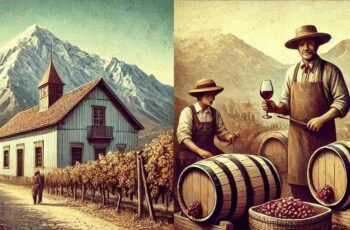
Terroir Wines in Chile’s Coquimbo Region
The recent weather front that hit Chile’s Coquimbo Region revealed a major weakness: the lack of intermediate reservoirs and efficient systems to collect rainwater. Despite ongoing drought conditions, much of the rainfall was lost through surface runoff, causing damage and flooding, without being utilized for agricultural or urban purposes.
“In light of this, the region should closely examine Texas’ experience in the 1940s, when the state faced severe droughts and rapid population growth. To ensure urban, agricultural, and industrial development, Texas implemented an ambitious strategy: building a vast network of artificial lakes, dams, and locks,” explains Maximiliano Morales, Strategic Advisor for Agricultural Projects.
The Texas model shows that it’s possible to plan a rainwater storage system that reduces reliance on groundwater and water trucks, while also helping prevent floods. Additionally, these water bodies create added value through tourism, recreation, and environmental benefits. A similar approach could be applied in the Elqui, Limarí, and Choapa river basins— providing long-term water security in the face of climate change.
A Replicable Model for Northern Chile
“I lived in Texas as an exchange student and have returned many times as an agronomist, especially post-pandemic, visiting Austin, Dallas, Houston, and San Antonio to promote softlanding processes for Latin American entrepreneurs,” adds Morales.
He proposes organizing a tech-focused tour to Texas to explore its artificial lake systems, which are now integrated into robust agricultural, wine, and tourism industries. Large vineyard areas have formed around these reservoirs, offering high value for visitors and investors alike.
“It’s a model that can be successfully replicated in Northern Chile,” he states.
Opportunity to Expand Premium Vineyards in Coquimbo
Adopting a similar strategy could significantly increase the area dedicated to premium vineyards, especially those producing sparkling and fine wines. International investors are already seeking regions with unique conditions to diversify their portfolios — and Coquimbo offers calcareous soils, low rainfall, and a coastal climate ideal for crafting fresh, mineral-driven, elegant wines.
One example is Azur, a Chilean sparkling wine from the Limarí Valley, celebrated for its freshness and minerality thanks to its coastal climate and soil. Also notable is Viña Tabalí, a leader in Chardonnay, Sauvignon Blanc, Pinot Noir, Syrah, and high-altitude red blends — maximizing the region’s terroir.
Another standout is Caballo Loco Grand Cru Limarí, a 100% Syrah crafted by Viña Valdivieso under the guidance of winemaker Brett Jackson, reflecting the valley’s full character: minerality, coastal freshness, and balanced acidity.
Texas’ Artificial Lake and Lock System
Unlike other U.S. states, over 95% of Texas lakes are man-made — built to capture rain and river water in an extremely variable climate. This infrastructure ensures water availability during dry periods and prevents flooding during storms or hurricanes.
These reservoirs supply cities like Dallas, Houston, Austin, and San Antonio. Key examples include:
- Lake Travis: built in the 1940s as part of the Colorado River system, crucial for the Austin area.
- Lake Livingston: one of the largest, supplying the Houston metro area.
- Lake Ray Roberts and Lake Ray Hubbard: vital for Dallas–Fort Worth.
Locks also play a key role in water level control and navigation in areas like the Houston Ship Channel, and they help regulate flow during storms — protecting urban and port infrastructure.
How Can Chile Move Toward This Vision?
Implementing such a model would require public-private collaboration, regional strategic planning, and the activation of technology transfer programs.
To coordinate a technical visit to Texas and explore replicable development opportunities in Chile, contact Maximiliano Morales at: andes@andeswines.com













